• Part 1: An Overview
• Part 2: Towns & Villages along the Canal du Nivernais
• Part 3: Best Places to Visit near the Canal du Nivernais
The Ultimate Guide to the Canal du Nivernais
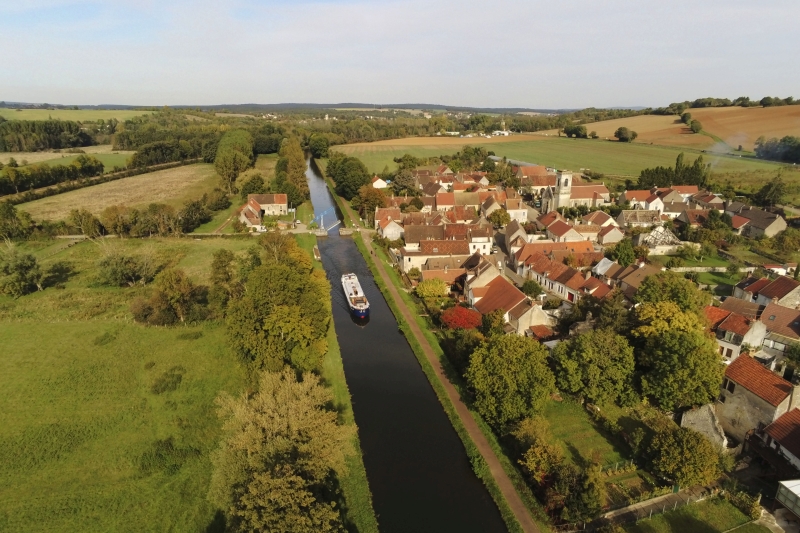
Part 1: The Canal du Nivernais – An Overview
The Canal du Nivernais, which stretches for 111 miles with 119 locks, passes through western Burgundy crossing the River Yonne and, from time to time, merging with the river itself. North of the summit at Baye, the River Yonne serves as a navigation channel for most of the way between Clamecy and Auxerre and, where the canal is artificial, the Yonne serves as a feeder for the canal’s water supply.
The Canal du Nivernais opened in 1843 after sixty years of construction and was primarily built to transport firewood from the Morvan Forest to Paris. Since the 16th century, the Yonne was used for “flottage de bois” – a system for floating logs downstream. Whereas most rivers and canals were used by barges transporting cargo, these logs were literally floated down the river in their thousands in rafts. Men called “flotteurs” rode on these rafts with poles to prevent jams in much the same way as the North American lumberjacks of more recent times. As the firewood demands increased, there was a need to transport logs from further away and so the requirement for a canal.
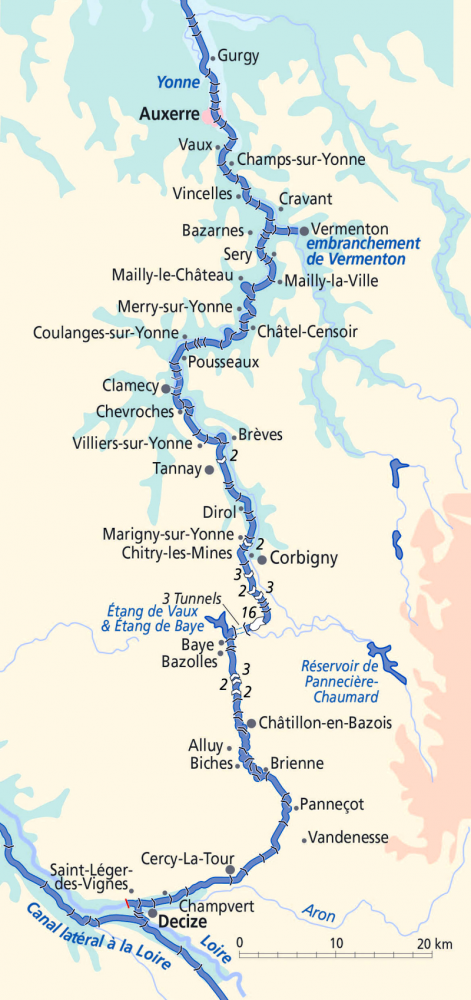
The Canal du Nivernais was first proposed in 1708 but abandoned due to opposition from the Duke of Orléans who, not coincidentally, was proprietor of the nearby Loing Canal. At the end of the 18th century, a project was started to extend the “floatable” part of the river towards the forests of Bazois by building a small channel in a tunnel under the hills of Collancelle. However, since this was the era of canals, the project of a small channel for floating timber was expanded to become a navigable waterway. Work started in 1784 (based on an earlier plan) and was finally completed in 1841.
The wood trade was the region’s main source of income until the 1920s, even when timber had to be carried on barges after flottage was outlawed in 1881. The canal saw the last of its commercial traffic in the 1970s and today, a shallow draft and small gauge locks limit the size of barges that use it today to 30m (100 ft) in its upper reaches.
Today the Canal du Nivernais is known for its tranquility, its beautiful valleys and hills, and its historic and picturesque villages and vineyards. Its path through the hills of Morvan, the wild valley of the Yonne, and the green meadows of Bazois makes it one of the most iconic canals in France.
Part 2: Towns & Villages along the Canal du Nivernais
From the 9th to 18th century Gurgy belonged to the Saint-Germain abbey of Auxerre. Within the village is a neolithic necropolis (burial site) which dates between 4000 and 5000 years, as well as a 13th century Gothic church and a castle once affiliated with the Templars.
At the junction where the Canal du Nivernais first leaves the River Yonne heading south, Auxerre is a beautiful city and a pleasant port, with elegant buildings gracing its waterfront. Always an important religious centre and a big market town for timber and wine, the River Yonne made Auxerre’s fortune; when rivers were the only viable means of transport in Europe, a good navigable river flowing towards large markets like Paris was the secret of wealth. The old town centre has a pedestrianised main square, timber-framed buildings and a 15th century tower with a richly-decorated 17th century clock. Cobblestone streets line the old quarter, with an open-air market and the spires of three churches contributing to an impressive skyline.
The Gothic Cathédral St-Étienne was completed in 1560, taking over three centuries to build. The interior is lit up by its fabulous 13th century stained glass and, outside, its flying buttresses lend support to the weight of the building.
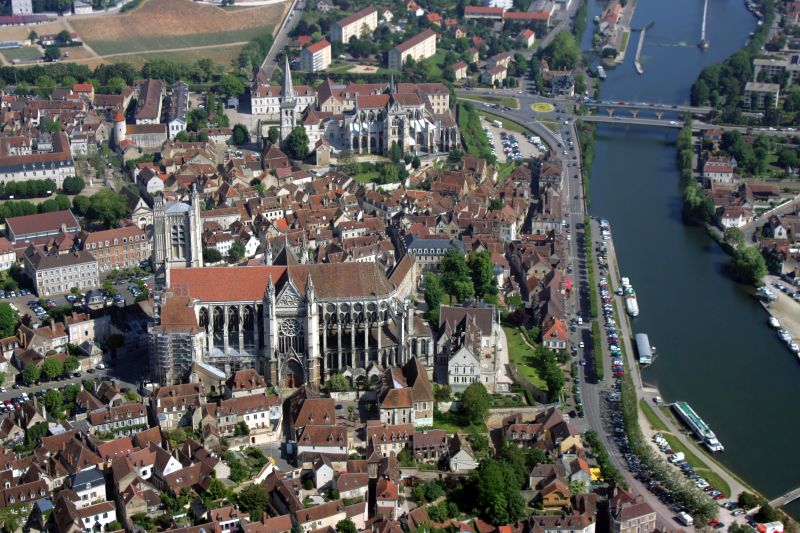
The Musée St-Germain displays an exhibition of Gallo-Roman finds from the area. It occupies an abbey founded by the bishop Germanus of Auxerre, who is best remembered for leading British natives to victory against Pictish and Saxon raiders in the early part of the 5th century. After his death in 448, the wife of the first Christian King of France, Clotilde, decided to expand the abbey in which the venerated saint was buried. It was completed in the 9th century in the Carolingian style. The crypts are decorated with contemporary frescoes, which are said to be the oldest in France. Despite housing a museum, the abbey is still open for religious services at certain hours during the day.
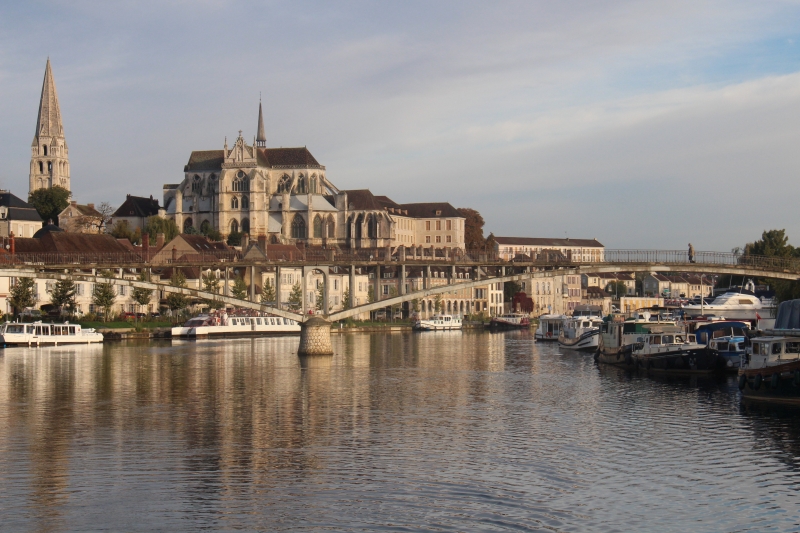
Vincelles provides easy access to several wine villages with enticing cellars, including St-Bris-le-Vineux, Irancy, Coulanges and Cravant. Across the river from Vincelles is a 13th century cellar where wine was loaded on barges for Paris, however today its function has changed somewhat and it is now a discotheque.
Accolay is a sleepy village with springs in the centre and a convenient canal-side Bouledrome (a relatively new French word, meaning a court on which to play… you guessed it… boules!).
A branch canal follows the River Cure to Vermenton. The Cure is one of the main tributaries of the Yonne and was used intensively for the transportation of timber. The logs were floated freely as far as Arcy and then formed into rafts for their journey down the Yonne, the Seine and finally to Paris. Vermenton started as an ancient settlement on the Roman route between Rome and Boulogne, the Via Agrippa, and today one can see the Notre Dame church, Meridian sundial, and the old wash house. Close by, the Abbey of Reigny should not be overlooked due to its exceptional 12th century architecture and fascinating history. During the summer months a series of concerts and exhibitions take place within the abbey complex. A system of underground caverns, La Grand Grotte d’Arcy-sur-Cure, has a subterranean lake and interesting geological formations.
Built on a rocky escarpment which overlooks the river, Mailly-le-Château is a maze of twisting little streets and higgledy-piggledy houses. A steep climb up a rocky path on the left bank of the river leads to a terrace in the Upper Village, where you will also see the 14th century castle and the 13th century church of St Adrian. The views of the Yonne Valley from the terrace are amazing.
One more bend and the cliffs of Le Saussois appear on the right bank on the Canal du Nivernias. This 50m (165ft) high limestone wall dominates the Yonne and now serves as a training area for rock climbers. Footpaths will also allow you to reach the summit.

The Canal du Nivernais and the Yonne twist as one until Châtel-Censoir. Taking its name from the Bishop of Auxerre, St Censure, the town offers several interesting walks beginning with the 15th century church of St-Potentien on the top of the hill overlooking the town. The 11th century Roman choir, the 13th century chapter house and the crypt form a harmonious complex of buildings.
Approaching Clamecy, the navigation alternates between the Canal du Nivernais and the Yonne. The town is situated at the confluence of the Yonne with the River Beuvron and is surrounded everywhere by water, often described as “the town of beautiful reflections.” Between the two rivers, the old quarter stands on a steep hill criss-crossed by a maze of narrow, winding streets and 12th – 16th century houses.
Clamecy served as a marshalling point for several crusades to the Holy Land, and one such crusader, Count William IV of Nevers promised the Bishop of Bethlehem that should Bethlehem ever fall, he would be welcome in Clamecy. After the capture of Jerusalem in 1188, the bequest of the now deceased Count was honoured and the Bishop of Bethlehem duly took up residence in the hospital of Panthenor, which remained the continuous seat of the Bishopric of Bethlehem in exile for almost 600 years until the French Revolution.
Although once an old medieval fortified town, Clamecy was also the centre of the logging industry in the 19th century when logs descended the rivers from the forests of the Morvan to be assembled in 235-foot rafts on these quays and surrounding ports. The rafts of logs then floated on the “infernal descent” to Paris, the great consumer of firewood. The Romain-Rolland museum devotes a whole room to this four hundred year era of log flotation. A bronze statue commemorates Jean Rouvet, who founded the flottage industry in 1549.
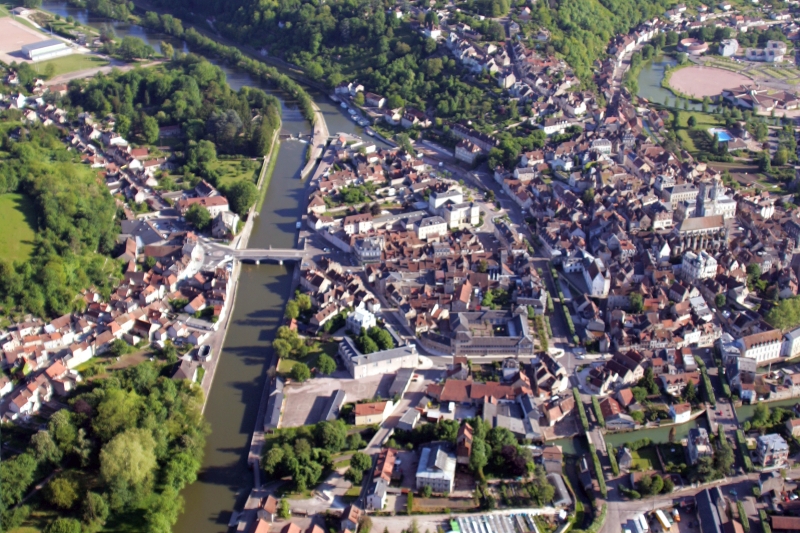
Chevroches, whose name derives from Cava Roca (hollow rock), is a hilltop village with lines of old fruit trees laden with mistletoe. The commune was a centre of smelting activity from the 2nd to 4th centuries AD and artefacts discovered in the village are displayed in a museum in Clamecy. The church of Saint Amateur has been dated to the 9th century.
The commune Villiers-sur-Yonne is within of the parish of communes of “des Vaux d’Yonne” and is the site of a Merovingian burial place, where tools, jewels and arms are on display.
At Asnois you can visit Le Bouc qui Fume (The Smoking Billy Goat), a chapel-based antique/curiosity shop.
Surrounded by vineyards, the town of Tannay sits high on a hill overlooking the Yonne. Strolling through the village you will see ancient houses dating from the 15th and 16th centuries, as well as the 12th century church of St-Léger. In the town’s cellars, you can find the dry white wine with a delicious bouquet; a favourite of Louis XIII.
Dirol is a 13th century farming settlement with approximately 120 inhabitants. Of particular interest are two bascule bridges (drawbridges) which helped defend the hamlet from attack in the middle ages. The drawbridge later guarded the approach to Chitry-les-Mines, whose “mines” refer to the small silver veins that were worked during the Renaissance. The château with four towers was a centre of the Resistance during the Second World War.
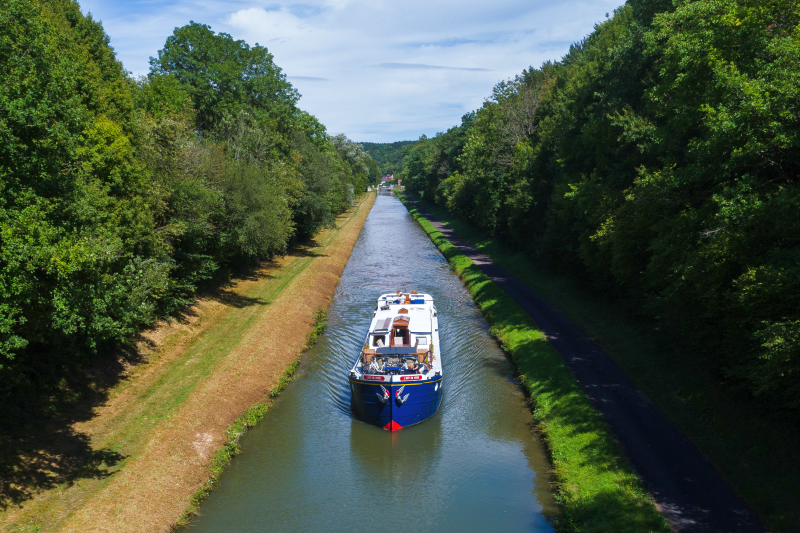
Corbigny, known for its cattle market, was used as a stop-over for pilgrims travelling from Vézelay to St-James of Compostella and was once fortified by five gates and fourteen towers, of which only one tower remains today.
Climbing toward the Canal du Nivernais summit, the pounds become shorter and the number of locks increases. In fact there are 22 locks over a distance of less than four miles. At Sardy-lès-Épiry, a lock staircase groups together a flight of 16 locks for a rise of 157 feet. By the 1950s, the threat of the closure of the canal was very real and it was becoming difficult to justify paying permanent lock keepers at every lock.
One key factor which lead to the saving of this particular waterway was Roger Pilkington’s voyage in his motor yacht Commodore, which he so beautifully described in his book “Small Boat Through France”. The decisive event that determined the canal’s future, however, was brought on by Pierre-Paul Zivy, an Anglophile who had cruised multiple rivers and canals in England and who eventually founded France’s first fleet of inland waterway self-drive cruisers on the Marne. Having been assured that neglected maintenance would be tackled by the authorities, he launched the “Saint-Line” at the Baye summit level in 1964. He lived in one of the old lock-keeper’s cottages along the Canal du Nivernais and a silver bust of him holding a model lock has been erected in his memory on the lock flight.
At Port-Brûlé is the entrance to the Yonne feeder canal which supplies the northern descent of the main canal with water from the Panneciere reservoir. The summit pound of water stretches two and a half miles from Port-Brûlé to the tiny village of Baye, passing through the three tunnels (695 feet, 880 feet, 2485 feet) carved out of the rock under la Collancelle. The approach to Collancelle is through deep, stone-lined cuttings running with waterfalls. The nearby lake of Vaux is a major ornithological site where you can admire thousands of birds of more than 180 species.
Châtillon-en-Bazois, with its impressive castle, begins the descent towards the Loire, passing through pastures of grazing white Charolais cattle. The vestiges of ancient stonework suggest that here the canal may occupy the site of an old moat.
St-Léger-des-Vignes marks the junction of the Canal du Nivernais with the Loire.
Decize is a pretty little village on a former island in the Loire at the confluence with the River Aron. Here the Loire is an important navigation aid as it forms the link between the Canal du Nivernais and the Canal Latéral à la Loire, both of which are within the town’s boundaries. Decize is an ancient settlement first noted in the Commentarii de Bello Gallico where Julius Caesar settled a dispute involving the Decetiae, a local tribe, from whom comes the town’s name. In the Middle Ages it belonged to the counts of Nevers, from whom it obtained a charter in 1226. A branch canal regulated by two locks connects the Canal du Nivernais to the Canal Latéral à la Loire.
Part 3: Best Places to Visit
Château de Bazoches is a 12th century feudal château that was adopted in 1675 by Marshall de Vauban, Louis XIV’s great military engineer, and the unrivaled master of sieges and 17th century military architecture. It was here that he designed more than 300 constructions and fortified sites. King Richard the Lionheart stayed here at various times. It is still owned by Vauban’s descendants today.
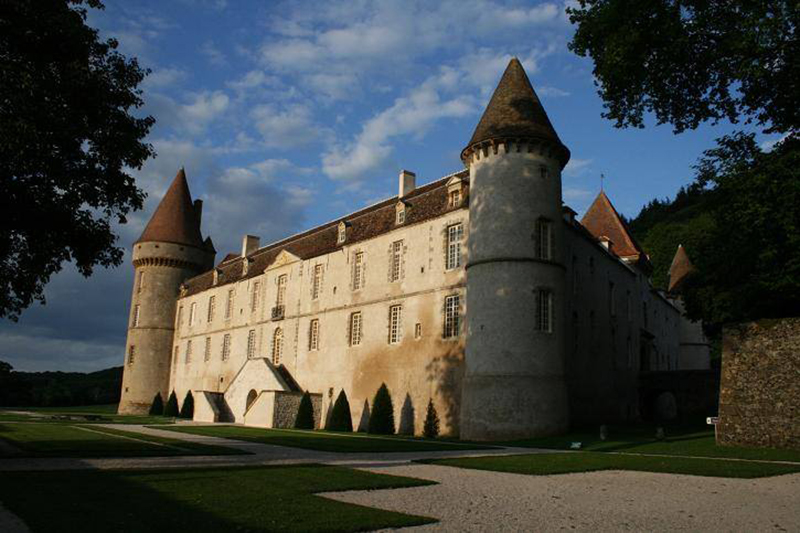
Located in the heart of a 42,000 acre forest, the Palace of Fontainebleau was one of the residences of the sovereigns of France. It was home to almost 30 kings over eight centuries from Louis IX to Napoleon III. Starting as a 12th century hunting lodge, Fontainebleau saw many additions and renovations over the centuries. However, it was during the Renaissance that the palace underwent its most spectacular transformation. Francois I (1494 – 1547) brought together extremely diverse collections of artwork and made Fontainebleau an artistic centre, attracting people from across Europe. It is world-renowned for its extraordinary Italian Renaissance art and architecture.
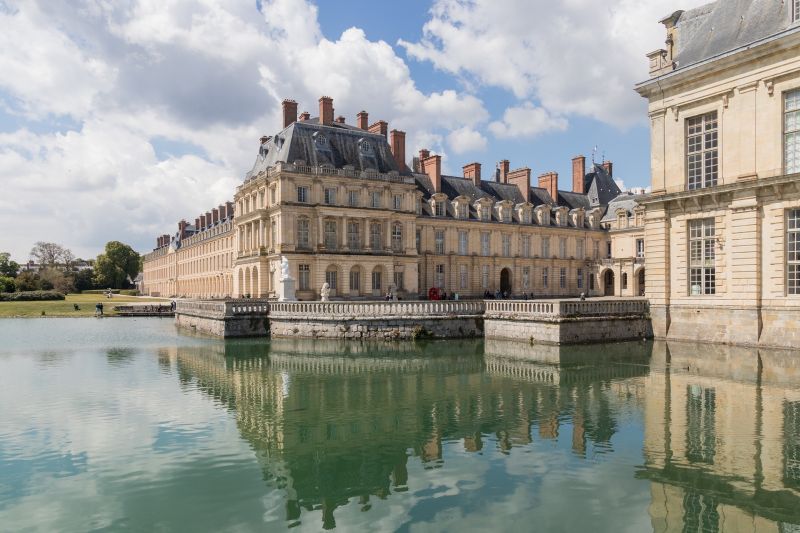
At Guédelon, workers, dressed in the attire of the 13th century, are building a medieval château using only the materials and tools and techniques of the time. Building materials such as stone and wood are sourced locally and then prepared on site. The project was initiated to fully understand how castles were built and, in doing so, rediscover forgotten skills. Once finished in the early 2020s, it will be an authentic recreation of a 13th century castle. The project has opened the area to employment and tourism – with more than 55 jobs created and 200 volunteers working on the site. In 2010 the site attracted more than 300,000 visitors, who can ask questions about the life and work of the builders in this journey back in time.
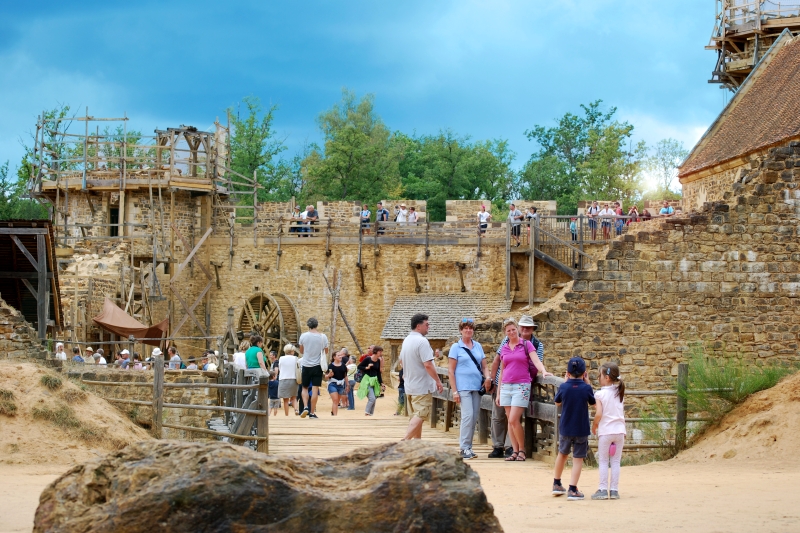
Irancy is a village now famous for growing Pinot Noir grapes, as well as two lesser known varietals César and Tressot and makes both red and rosé wines, making the area one of the most northernly parts of France to produce red wines. Its unusual topography – a low valley whose slopes are surrounded by vines and cherry trees – shelters the grapes from most of the bad weather during the winter months, whilst allowing enough sun through to ripen the grapes.
Noyers-sur-Serein, officially one of the Most Beautiful Villages in France, is the epitome of a charming medieval settlement, with its perfectly preserved ramparts, gates, and cobbled streets. The town’s 12th century castle was dismantled in 1599 by Henry IV after it fell into disuse and disrepair and today the village is popular with tourists. The town has several restaurants, bars & cafés, art galleries, a pottery and a local museum. A must see on any cruise on the Canal du Nivernais.

In November of each year, Noyers holds two large truffle festivals where locally found truffles are sold to buyers from across France and beyond.
St-Bris-le-Vineux was an important fortified market centre where half-timbered and stone buildings are many centuries old. At one time, there were 17 towers and three entrances to the walled town, while underground, an amazing network of galleries connect the houses and streets. The stone here is of very high quality and nearby quarries produced the building blocks for the Pantheon in Paris.
Red, white and rosé wines are produced here and can be sampled in the medieval cellars under the town. The Sauvignon Blanc variety grown around St-Bris-le-Vineux, unusual for this part of France, was granted its own AOC in 2003, with the name, St-Bris, taken from the town, whereas the local Chardonnay and Pinot Noir is classified as Bourgogne Côte d’Auxerre.
Vézelay is an historic hilltop town in the Cure Valley and a religious shrine. It was the site of the Call to the Second Crusade by St-Bernard of Clairvaux in 1146; in 1058 Pope Stephen IX confirmed the authenticity of the relics of Mary Magdelene brought to the town at the end of the first millennium and consquenetly during the Middle Ages it became a major pilgrimage site – to some extents it still is to this day. Being on the Way of St James, it also serves as a special stop-over for pilgims journeying to Santiago de Compostella in northern Spain. The imposing Roman Basilica of Ste-Madeleine, built with the help of donations from the pilgrims visiting the relics during the 12th and 13th centuries, is perched high above the “eternal hill”. The Abbey suffered a decline, not least during the Religious Wars of the 16th century when it was sacked by the Huguenots in 1569.

By the time of the French Revolution, the building was in danger of collapsing due to neglect, and, in 1834 the inspector of historical monuments again warned of the risk if nothing was done to save it. On his recommendation, Eugene Violelet-le-Duc was appointed to supervise the massive – and successful – restoration of the abbey, undertaken in various stages between 1840 – 1861, during which various weathered and vandalised sculptures were replaced. The flying buttresses which support the nave are another of Viollet-le-Duc’s additions to the abbey. The interior, with its immense Christ in Glory portal, is today seen as one of the greatest Romanesque works of art in the West.
Ready to Explore the Historic Canal du Midi?
Guests aboard luxury hotel barge L’Art de Vivre will have the opportunity to visit many of the sites listed above. For more information on our itineraries and the rest of our collection of luxury hotel barge cruises, why not order a free copy of our brochure today or speak to a member of our team directly using our handy Contact Form.
 English
English
 Spanish
Spanish French
French German
German Norwegian
Norwegian Portuguese
Portuguese Swedish
Swedish Italian
Italian Russian
Russian Simplified Chinese
Simplified Chinese Japanese
Japanese